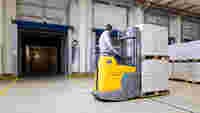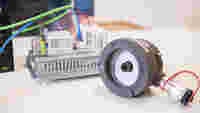Automated Loading Documentation

It’s uncommon to find systems in production plants that combine the three different worlds smoothly. A project by WAGO and TTS-Automation shows exactly how providing an open control and protocol landscape can achieve this. This project combines the IT environment, process technology and logistics to implement an efficient, safe, well-documented loading processes.
TTS Automation and WAGO:
Intelligent industrial camera and WAGO IoT Box for loading documentation
Automation of the control and loading process for containers
WAGO controller used for documentation in compliance with data protection regulations








